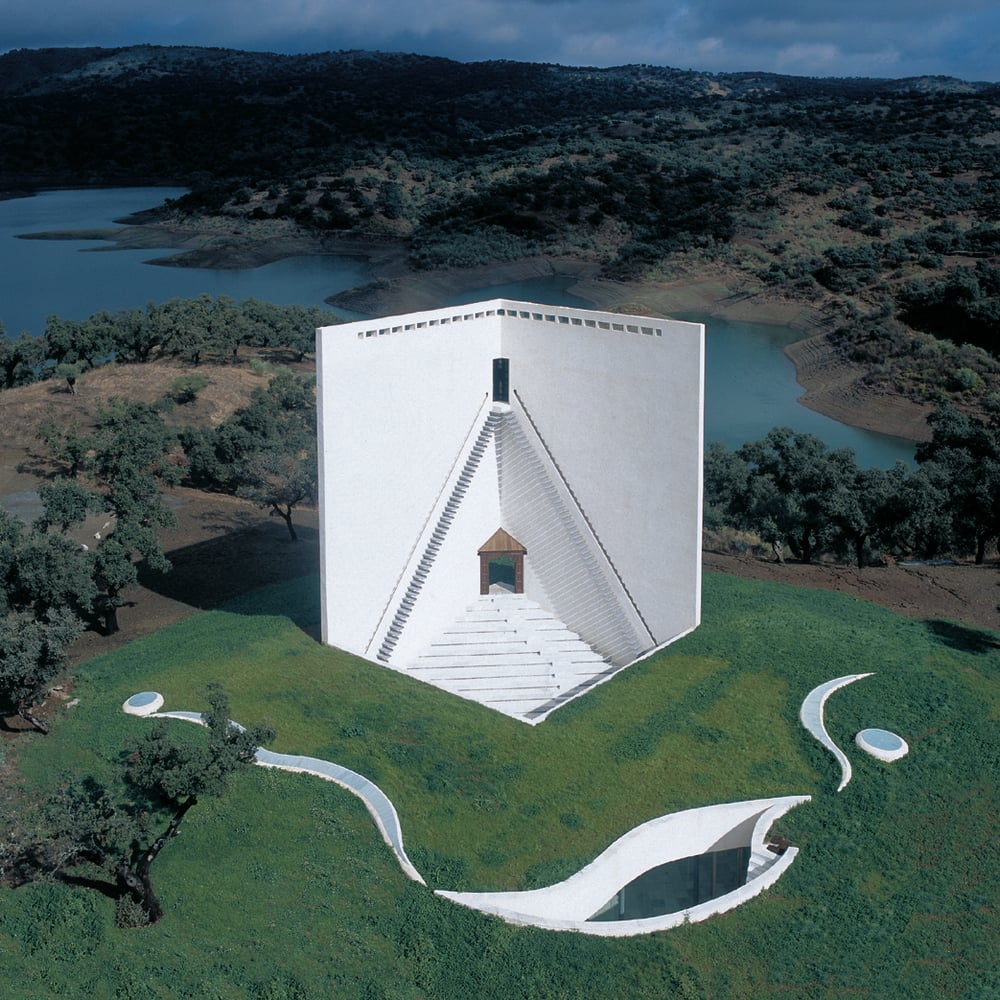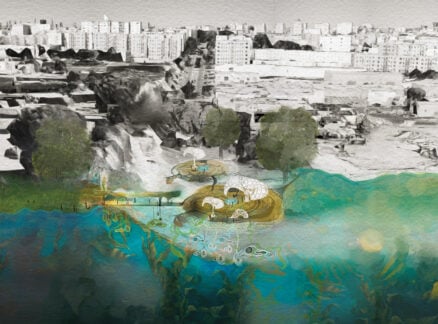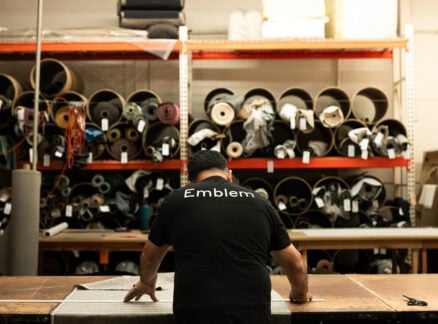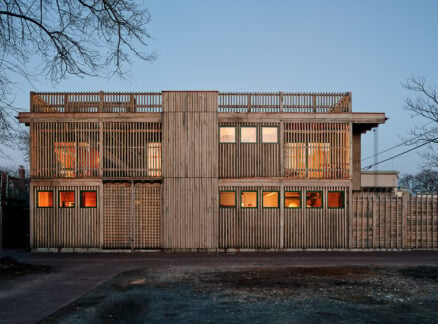
March 8, 2017
Green Pioneer Emilio Ambasz on Nature & Form-Making
Vladimir Belogolovsky interviews the architect, whose concept of “green over gray” has been pushing the debate around sustainability forwards since the 1970s.
This article comes to us via our media partner ArchDaily. You can read the original article here.
While many of the pioneers of green architecture could arguably be criticized as technocratic and dry, this has never applied to Emilio Ambasz. His concept of “green over gray” has been pushing the debate around sustainability forwards since the 1970s, but alongside this concept he has developed a critical approach to architectural meaning and form-making which competes with many of architecture’s more poetic practitioners. Ahead of Vladimir Belogolovsky’s exhibition of Ambasz’s work, “Emilio Ambasz: Architecture Toward Nature,” which was on show at the Singapore’s Urban Redevelopment Center from February 6th – 28th, Belogolovsky shared his interview with the architect – the latest interview in his “City of Ideas” column.
Vladimir Belogolovsky: I read that you knew you wanted to be an architect at an early age and when you were 11, you even dared to propose an exhibition on American architecture in Buenos Aires. What was it that prompted your initial interest in architecture?
Emilio Ambasz: I was interested in architecture since I was nine, I think. I am a person of steady ideas. Once I have an idea that’s it, I persist. I wanted to become an architect and that led to my applying to Princeton. I sent my application with a wax seal telling them that I went to bed every night with the idea of wanting to be an architect and woke up every morning with this idea…

VB: You worked for Amancio Williams while still at high school because you considered him Argentina’s greatest architect of the 20th century. Why do you think so, as he was not among the most prolific builders?
EA: No, he was a very prolific designer, but he didn’t get many things built because of an immense amount of bad luck. He designed extraordinary buildings, but things happened beyond his control.
VB: And you wanted to work for him because…
EA: Because I considered him to be a great poet. For me architecture has to do with poetry and art. He was a true artist and that’s who I wanted to be.

VB: At Princeton, you completed your undergraduate and graduate programs in less than two years…
EA: I went to Princeton after having let two years go by after finishing high school. But even before that I smuggled in to attend lectures at the university in Buenos Aires. There were thousands of students and no one paid attention to little me, so I went to as many lectures as I wanted.
In addition to that, the American consulate had a very good library in Buenos Aires, called Lincoln Library, which had many honorable books on American architecture, including the book by Henry-Russell Hitchcock, Latin American Architecture Since 1945. I used to borrow these books so much that when it was time to replace them with new ones, many old books were simply given to me. As a matter of fact, I taught myself English by trying to read Alfred Barr’s book Masters of Modern Art. You can blame him for my bad English, as well as for my syntax. [Laughs.]


VB: I am still trying to grasp how you graduated from Princeton so fast. When we talked about this a few years ago, you said: “If you don’t believe me ask my professor, Peter Eisenman. I did and he confirmed it by saying: “I don’t know how Emilio did it, no one else has done it before or since, but he certainly did.” So this is established. But if you graduated so fast that means your undergraduate design studios were all packed into a single thesis project? Or did you develop a number of projects?
EA: I finished the entire undergraduate program in one semester. During the first semester, I had different design projects every week. Peter was involved in all of them; it was his first year teaching at Princeton. And in the second semester I was taking courses in the Master’s program. I had my own program there. At Princeton, you could do that… Well, I should have stayed longer. Then I would have learned something! [Laughs.]
VB: How would you summarize what you learned from your professors there?
EA: The thing I took from Princeton was my deep-seated interest in philosophy, poetry, and history. For that, Princeton was marvelous because in the undergraduate school you could take courses here and there. For example, I had a great professor, Arthur Szathmary who taught philosophy of aesthetics.
When I started teaching freshmen, immediately upon graduating from Princeton, my focus was on methodology. I taught them methods for solving problems. Various seemingly disconnected elements had to be connected into a graspable structure. They had to solve the problem at hand. I didn’t want to give them real projects from my office or competitions, which was typical for other professors. I was giving students a project and every Friday I would critique it. Then I would ask them to design the same project again and the critique would follow again, and we did this every week. It was the same project, a library. My own thesis project was the National Library of Argentina, but I asked my students to design a library that could be built in any American town. I was interested in seeing how the students could apply themselves and understand a particular problem. I trusted that having understood the nature of a problem and provided an answer to that not only would they gain confidence in themselves but also gain an insight into the nature of problems. There is a marvelous Japanese concept called Yugen. It means that if you gain an insight into the essence of a problem, that insight will help you to understand the nature of other problems.
VB: Your buildings have some features of deconstructivism. They are, in a way, de-constructed. Such is your Casa de Retiro Espiritual house [1975], but in a very controlled way, with a concern for the balance, symmetry, and totality of the overall image.
EA: No, I am not a deconstructivist in that sense, not like Eisenman or Libeskind. What I do is that I separate elements and they stand apart from one another in a very clear way. For example, in the Casa de Retiro two freestanding walls define a cube. With very few elements, you can define an edifice.
VB: Could you talk about your 1972 exhibition “Italy: The New Domestic Landscape” and how it relates to your theory of two types of curators – one being a farmer and the other a hunter?
EA: The farmer would collect the seeds from this year’s harvest and keep them for the next year. The hunter is going around and whatever he finds he hunts. OK? That’s me. All right?
When I did my shows, I didn’t wait for the architects to come to me with their projects. I proposed a problem and with the sponsorship that MoMA could give, I was able to develop projects with the invited architects. In the case of Italy: The New Domestic Landscape I proposed the program to the architects. I invited them to design their projects for the exhibit. None of these projects existed before. The Museum was the patron of these architects. We raised the funds to do that. I am not an art historian, so for me to do an exhibition on existing projects was not interesting.
VB: Let’s talk about Luis Barragan, whose solo exhibition you also organized at MoMA in 1976, which was the first exhibition of his work in the US and the exhibit’s catalog by you was the first ever monograph on his work.
EA: The reason I wanted to do a show on him was because so many architecture students at the time were into ersatz sociology and the results were quite pathetic and lousy. So I wanted them to see a real work of architecture. Barragan’s work is not simple. It is very complex, but the elements are easy to comprehend. Yet, they have many meanings. So we did the show projecting beautiful slides on a huge wall of 30 feet across and 20 feet in height in a small room. So the effect was as if you were inside his buildings. We made the slides available to American universities as well. It had an immense effect and I wrote the book.
VB: Being the curator at MoMA was just one of your interests. So you did not consider becoming a curator elsewhere after leaving MoMA, right?
EA: I didn’t want that as a profession, no. I resigned from MoMA when I was in sublime glory there. The Italian show had a marvelous success. We never had so many visitors before. But, the real reason for leaving was my desire to be a practicing architect.
VB: Is there a particular design process that you go through in your architectural projects?
EA: I detest writing theories. I prefer writing fables. They are metaphors, they are standards for approximation. That’s what metaphors are philosophically. A metaphor is a model for approximation. I don’t work with words. When I design, I try to remove all words from my mind and I work with images. Because if I work with words I will remain in the semantic domain, which is something already understood. But I am interested in images that come to me without being conscious about them until they simply come. And I am not aware of their meanings until I start thinking. Then I start asking questions. This was the case with my Casa de Retiro house. I could come up with a whole theory about that project, but it came to me as a complete image. I think it is a great tragedy when the word arrives before the image.
VB: You also wanted to be an industrial designer.
EA: And the way I did it was very different from anybody else. First, I invent products for myself, without a client’s commission. I engineer them. I build the prototypes. I build the machinery to manufacture the pieces. I get the mechanical patents, I don’t believe in design patents. Then I bring the finished product to a potential licensee and say: “You have 30 days to say yes or no. If you say no, I will go to your competitor. If you say yes, I can even give you a number of units, so you can test the market. I even have professional photographs and texts already written for the catalog.” So if the manufacturer said yes, in six months the product would be on the market. Not 30 months of how it is usually done when everything needs to be designed and developed from scratch.
VB: And what was your first product?
EA: Vertebra chair. I did other products before, but that one was the first realized. It was done the same year I left MoMA. Nothing like that existed before. It became the first ergonomically designed and automatically adjustable chair in the world. We developed and patented it in 1975 and Krueger, the company, introduced it to the public in 1976.
VB: You once said that you dream of the future where “you can open your door and walk out directly on a garden, regardless of how high your apartment may be… within a high-density city, reconcile our need for building shelters with our emotional requirement for green spaces…” Does this remain a dream or do you think some of the most recent projects in Singapore or your own project in Fukuoka [1994] and elsewhere, perhaps made this dream closer to reality?
EA: Well, they are all my children! I did the first vertical garden wall in my ENI Headquarters closed competition project for this Italian petrochemical giant in 1998 in Rome. Jean Nouvel was one of the other two invited competitors, but that competition was suspended… It was about modernizing the existing structure, the first curtain wall building in Italy from the 1960s. Water and wind were filtering in, so they had to change the façades on this 20-story building. My solution was very simple and logical. Instead of using 1.2 meter-wide scaffolding to change the façade, I proposed extending them to 3.6 meters. Then I would put one pane of glass at 1.8 meters from the old glass to stop the wind, the rain, the noise. And the remaining 1.8 meter-wide open part of the scaffolding would carry the plants. I tried to make the oil industry more sensitive to problems of ecological equilibrium. Unfortunately, the man who commissioned it resigned a few days before the jury decision in order to run another corporation, and the one who replaced him didn’t want to do anything of that sort. That’s the story of the very first vertical garden wall.
VB: You once talked about the need for ornament in architecture and by ornament you meant the use of nature quite literally. Could you elaborate on that thought?
EA: Well, I think two great traditions in architecture were lost with the modern movement. I think buildings have to be ornamented. And my way of doing it is such that it would contribute to the building’s performance. If I am adding leaves and garlands made of marble, I am not contributing anything to the building. But if I add real leaves then not only do I decorate the building with a living and changing ornament, I also add to the building’s integrity and performance by providing a barrier from the sun’s heat and that’s what makes it very useful and practical. I am a very practical person. There is a reason why I designed a diesel engine and other industrial design products.
The second forgotten tradition is that which, most likely, came before architecture: that is to say the capacity to invent theatrical stage sets. Two of the earliest examples were, first, the erection of defenses against enemies, and, second, propitiatory constructions such as tombstones of one sort or another to appease and gain the protection of the departed spirits.
VB: I want to finish our conversation with one of your quotes: “I have always believed that architecture is an act of the myth-making imagination. I believe that the real task of architecture begins once functional and behavioral needs have been satisfied. It is not hunger, but love and fear – and sometimes wonder – which make us create. The architect’s cultural and social context changes constantly, but his task, I believe, remains always the same: to give poetic form to the pragmatic.”
EA: Thank you. I could not have said it better! [Laughs.]
VLADIMIR BELOGOLOVSKY is the founder of the New York-based non-profit Curatorial Project. Trained as an architect at Cooper Union in New York, he has written five books, including Conversations with Architects in the Age of Celebrity (DOM, 2015), Harry Seidler: LIFEWORK (Rizzoli, 2014), and Soviet Modernism: 1955-1985 (TATLIN, 2010). Among his numerous exhibitions: Anthony Ames: Object-Type Landscapes at Casa Curutchet, La Plata, Argentina (2015); Colombia: Transformed (American Tour, 2013-15); Harry Seidler: Painting Toward Architecture (world tour since 2012); and Chess Game for Russian Pavilion at the 11th Venice Architecture Biennale (2008). Belogolovsky is the American correspondent for Berlin-based architectural journal SPEECH and he has lectured at universities and museums in more than 20 countries.
Belogolovsky’s column, City of Ideas, introduces ArchDaily’s readers to his latest and ongoing conversations with the most innovative architects from around the world. These intimate discussions are a part of the curator’s upcoming exhibition with the same title which premiered at the University of Sydney in June 2016. The City of Ideas exhibition will travel to venues around the world to explore ever-evolving content and design.



























